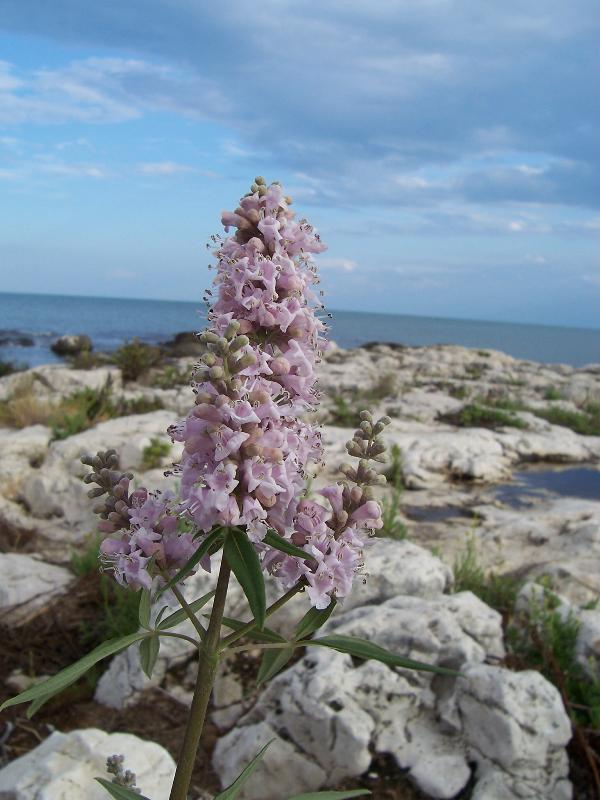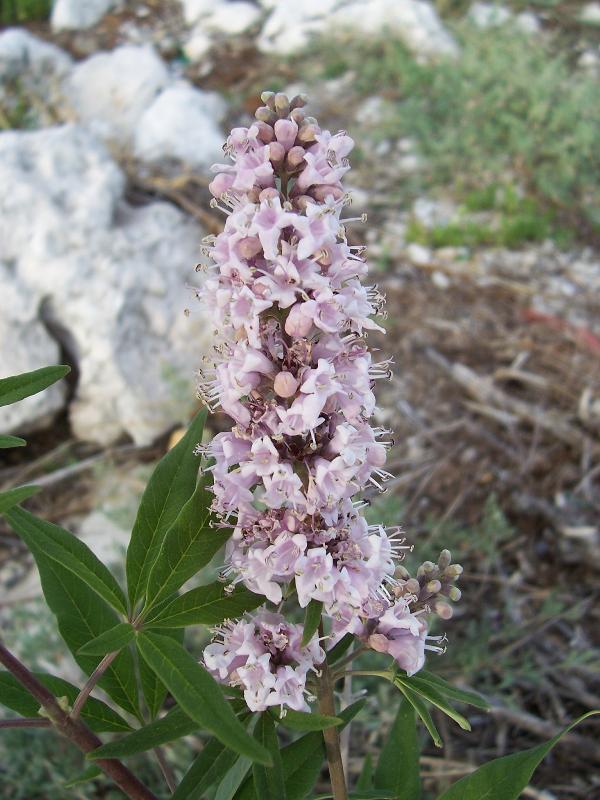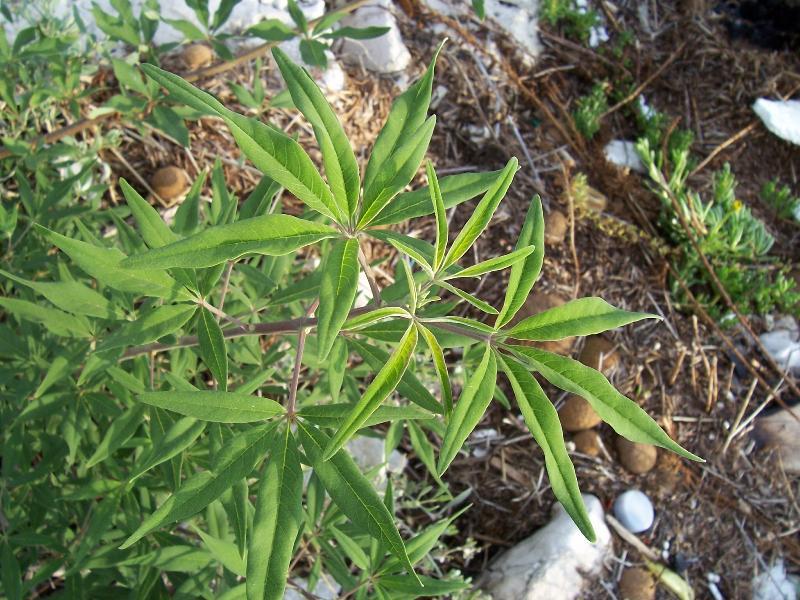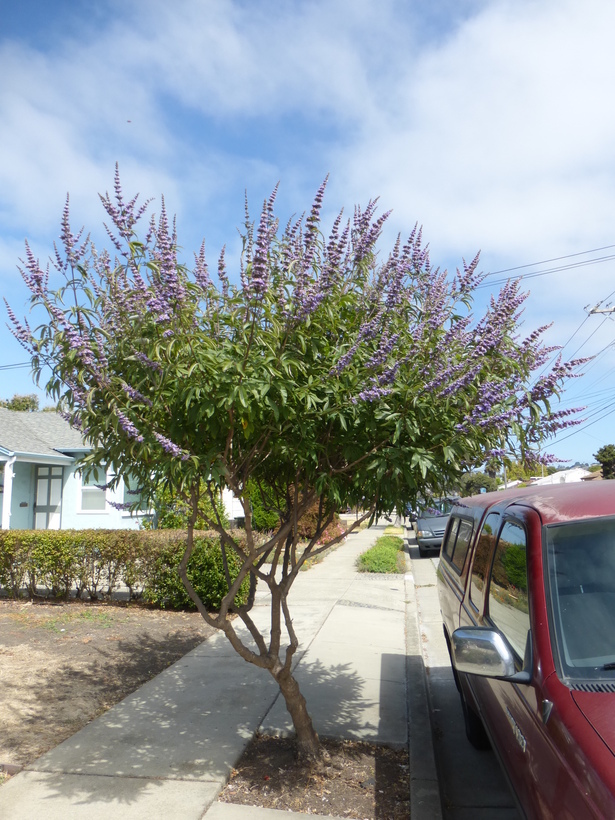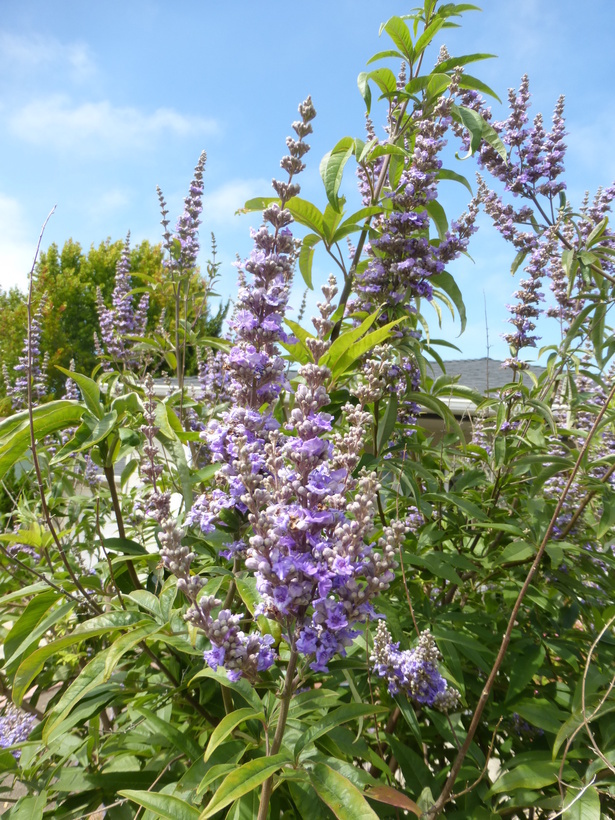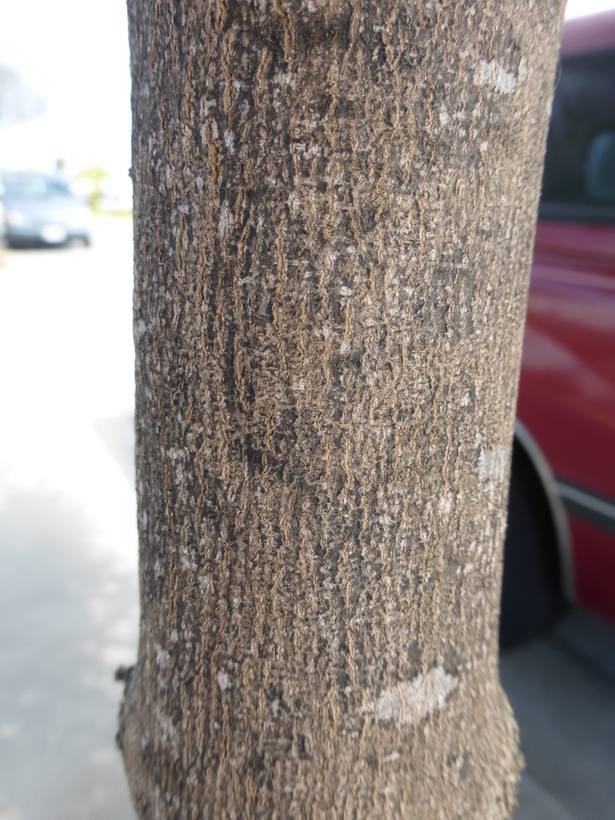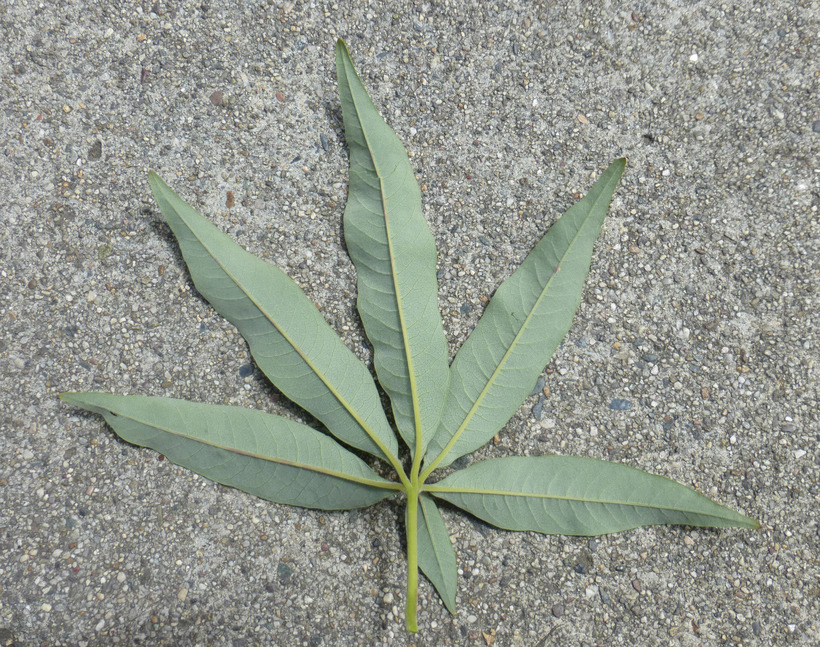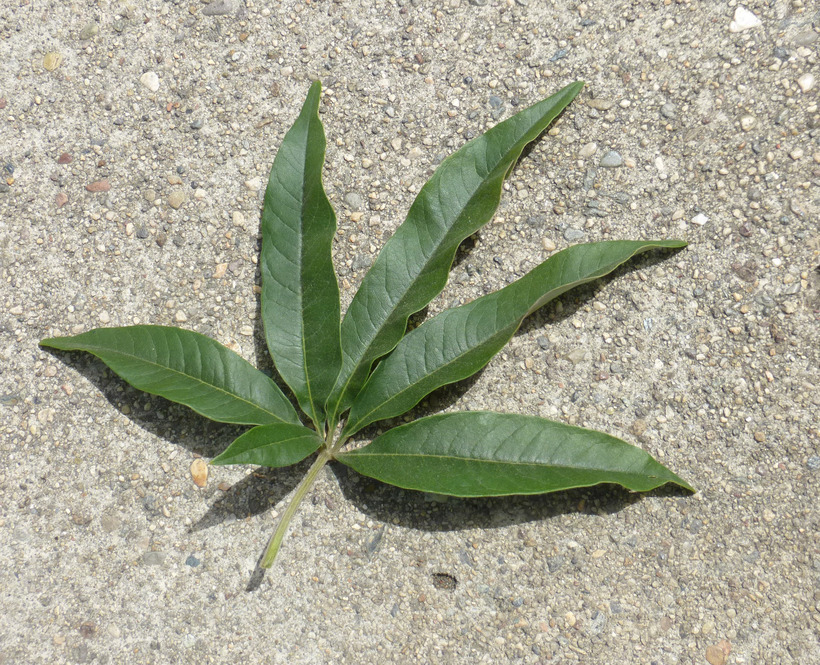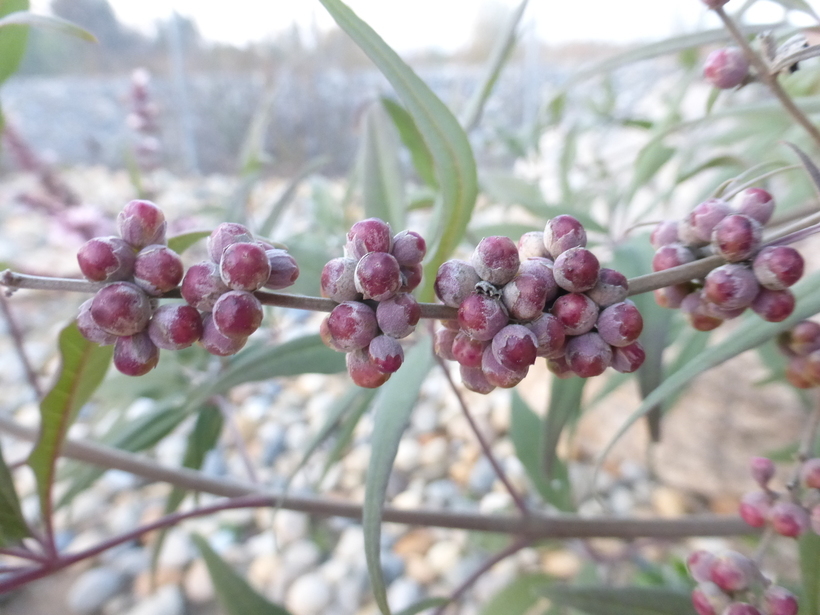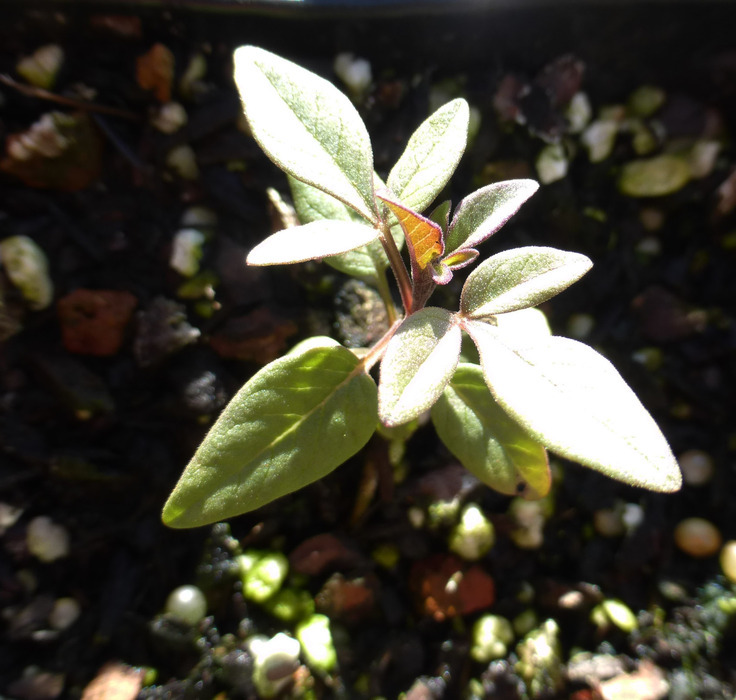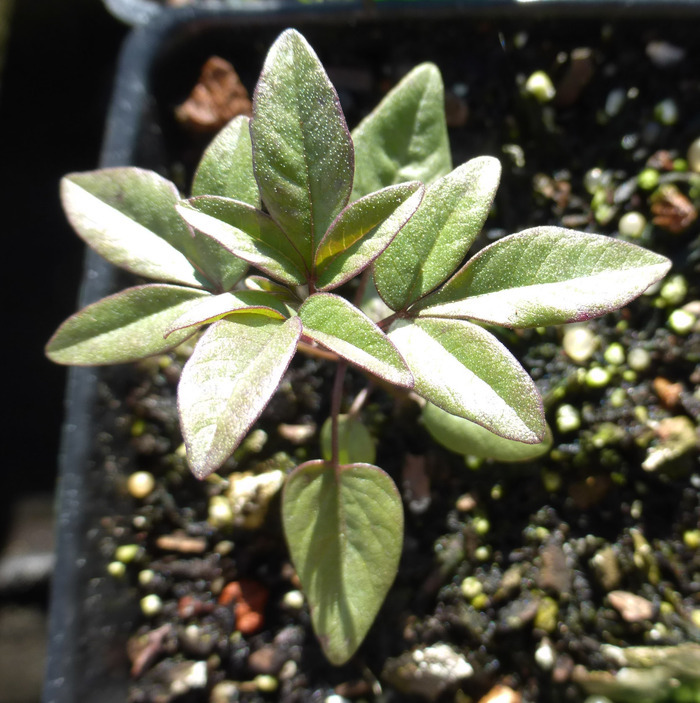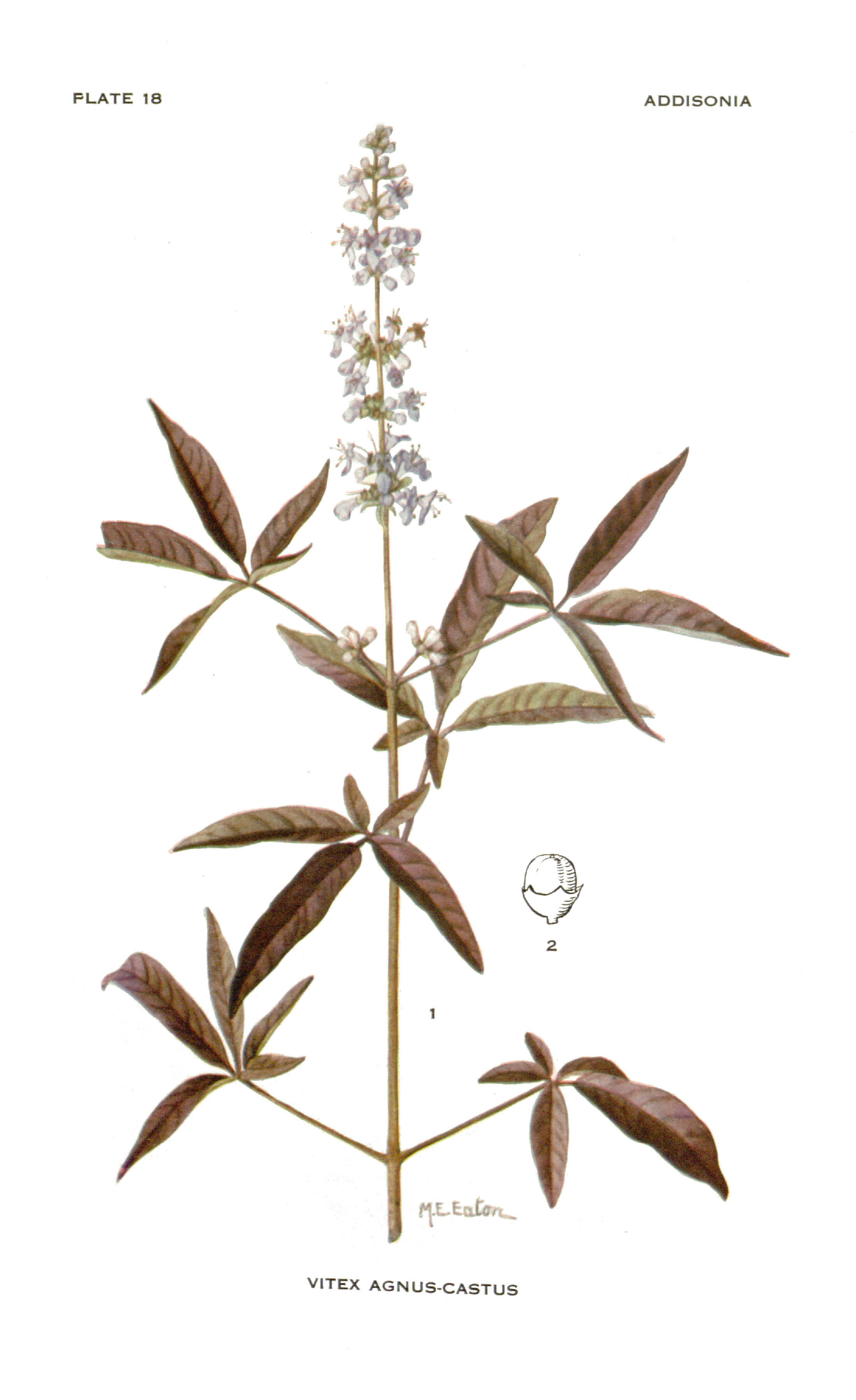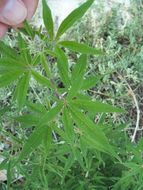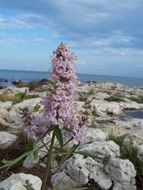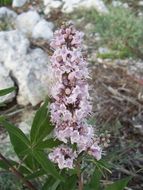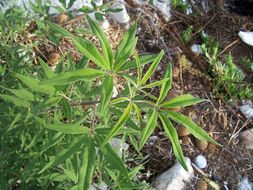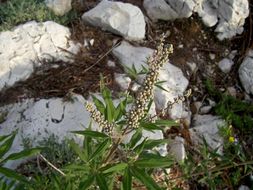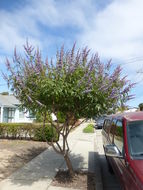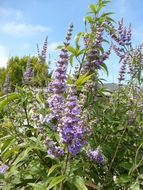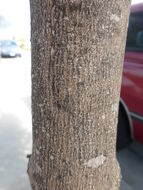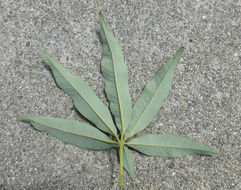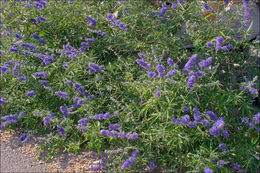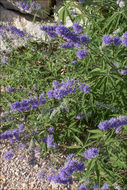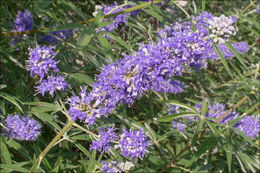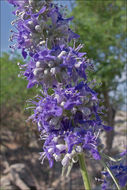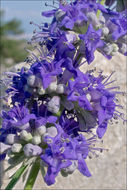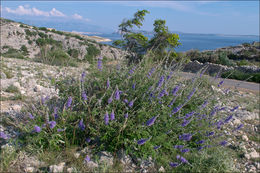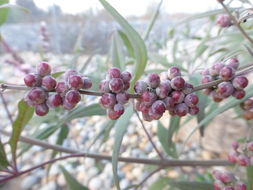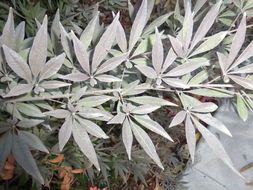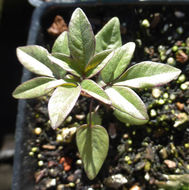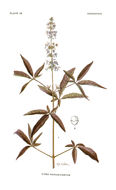-
-
-
-
-
-
-
-
-
-
-
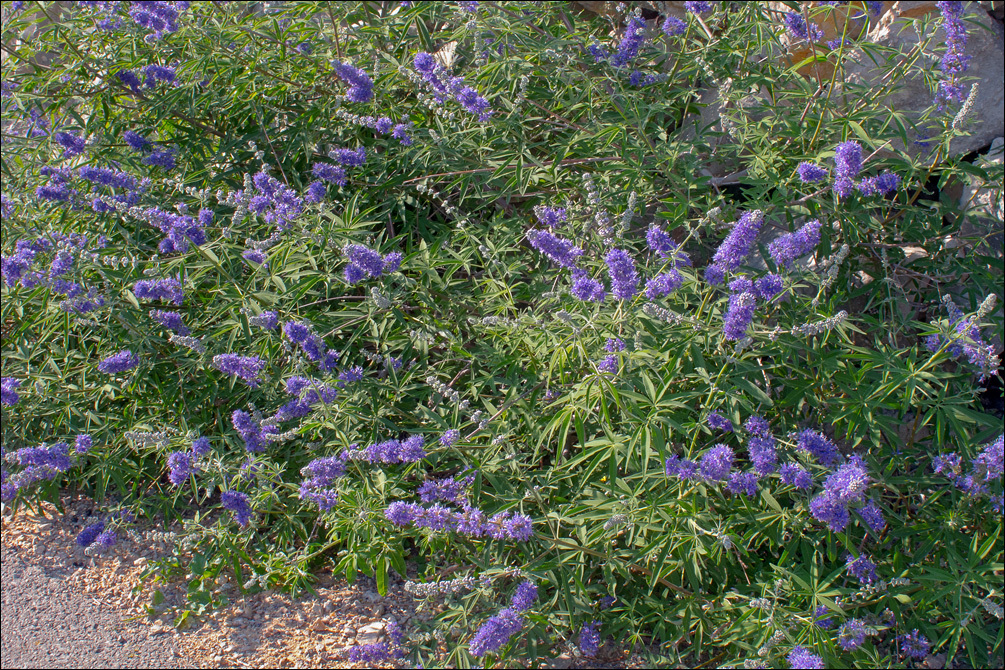
Slo.: navadna konopljika - syn.: Agnus-castus robusta (Lebas) Carrire, Vitex robusta Lebas - Habitat: Close to Adriatic Sea shore; almost flat terrain; gravelly, calcareous ground, full sun, dry place but ground water present (near water source and reservoir of drinking water for village Stara Baka), elevation 12 m (40 feet); average precipitations ~ 1.000 mm/year, average temperature 12-14 deg C, Mediterranean phytogeographical region. Substratum: soil among rocks and gravel.Comment: Vitex agnus-castus is a beautiful Mediterranean shrub (sometimes also a small tree up to a few meters tall), not very common but also not a rare plant. It can be found all around Mediterranean Sea along sea shore but also inside the country along rivers and lake shores. Often it is associated with human settlements. The plant is known and esteemed for millennia. Hippocrates and Theofrastos, among others, knew and described the plant and its many uses predominantly in medicine but also in culinary and horticulture. Plant's seeds were used as a supplement of pepper. They were also used as a suppressor of sexual drive (look at the scientific as well as English and German common name of the plant). In contradiction to this, some historical sources consider it as an aphrodisiac. Be as it may, it definitely has an effect on human hormones, which is confirmed also by modern medicine.Ref.:(1) A. Martini et all., Mala Flora Slovenije (Flora of Slovenia - Key) (in Slovenian), Tehnina Zaloba Slovenije (2007), p 585. (2) R. Brus, Drevesa in grmi Jadrana (Trees and Shrubs of Adria) (in Slovene), Mordijan (2012), p 515.(3) I. Schnfelder, P. Schnfelder, Kosmos Atlas Mittelmeer- und Kanarenflora, Kosmos, (2002), p 169.(4) M. Blamey, C. Grey-Wilson, Wild Flowers of the Mediterranean, A & C Black, London (2005), p 387.
-
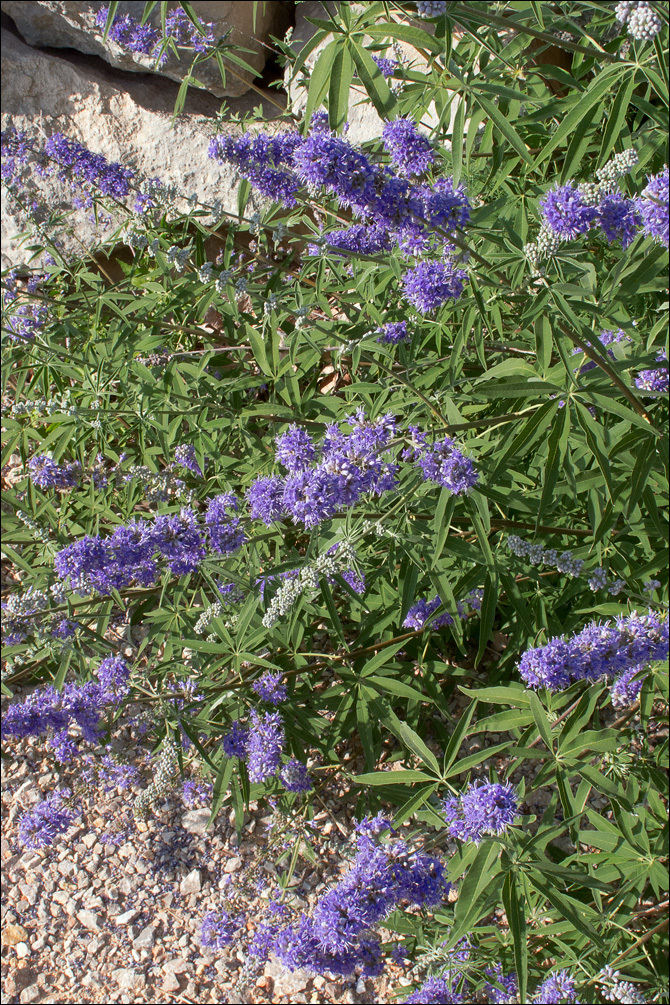
Slo.: navadna konopljika - syn.: Agnus-castus robusta (Lebas) Carrire, Vitex robusta Lebas - Habitat: Close to Adriatic Sea shore; almost flat terrain; gravelly, calcareous ground, full sun, dry place but ground water present (near water source and reservoir of drinking water for village Stara Baka), elevation 12 m (40 feet); average precipitations ~ 1.000 mm/year, average temperature 12-14 deg C, Mediterranean phytogeographical region. Substratum: soil among rocks and gravel. Comment: Vitex agnus-castus is a beautiful Mediterranean shrub (sometimes also a small tree up to a few meters tall), not very common but also not a rare plant. It can be found all around Mediterranean Sea along sea shore but also inside the country along rivers and lake shores. Often it is associated with human settlements. The plant is known and esteemed for millennia. Hippocrates and Theofrastos, among others, knew and described the plant and its many uses predominantly in medicine but also in culinary and horticulture. Plant's seeds were used as a supplement of pepper. They were also used as a suppressor of sexual drive (look at the scientific as well as English and German common name of the plant). In contradiction to this, some historical sources consider it as an aphrodisiac. Be as it may, it definitely has an effect on human hormones, which is confirmed also by modern medicine. Ref.: (1) A. Martini et all., Mala Flora Slovenije (Flora of Slovenia - Key) (in Slovenian), Tehnina Zaloba Slovenije (2007), p 585. (2) R. Brus, Drevesa in grmi Jadrana (Trees and Shrubs of Adria) (in Slovene), Mordijan (2012), p 515. (3) I. Schnfelder, P. Schnfelder, Kosmos Atlas Mittelmeer- und Kanarenflora, Kosmos, (2002), p 169. (4) M. Blamey, C. Grey-Wilson, Wild Flowers of the Mediterranean, A & C Black, London (2005), p 387.
-
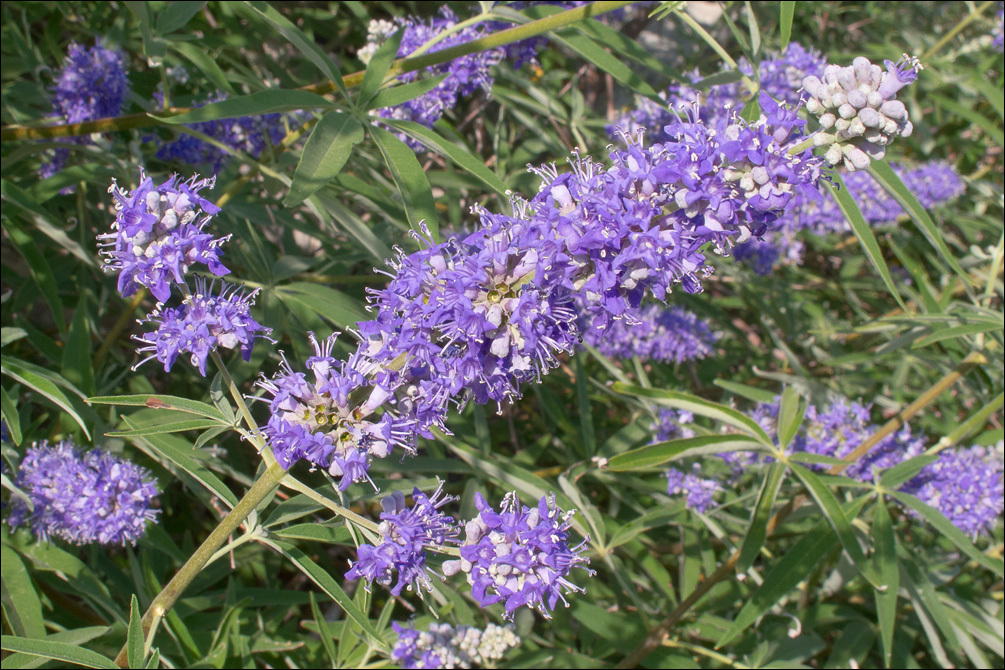
Slo.: navadna konopljika - syn.: Agnus-castus robusta (Lebas) Carrire, Vitex robusta Lebas - Habitat: Close to Adriatic Sea shore; almost flat terrain; gravelly, calcareous ground, full sun, dry place but ground water present (near water source and reservoir of drinking water for village Stara Baka), elevation 12 m (40 feet); average precipitations ~ 1.000 mm/year, average temperature 12-14 deg C, Mediterranean phytogeographical region. Substratum: soil among rocks and gravel. Comment: Vitex agnus-castus is a beautiful Mediterranean shrub (sometimes also a small tree up to a few meters tall), not very common but also not a rare plant. It can be found all around Mediterranean Sea along sea shore but also inside the country along rivers and lake shores. Often it is associated with human settlements. The plant is known and esteemed for millennia. Hippocrates and Theofrastos, among others, knew and described the plant and its many uses predominantly in medicine but also in culinary and horticulture. Plant's seeds were used as a supplement of pepper. They were also used as a suppressor of sexual drive (look at the scientific as well as English and German common name of the plant). In contradiction to this, some historical sources consider it as an aphrodisiac. Be as it may, it definitely has an effect on human hormones, which is confirmed also by modern medicine. Ref.: (1) A. Martini et all., Mala Flora Slovenije (Flora of Slovenia - Key) (in Slovenian), Tehnina Zaloba Slovenije (2007), p 585. (2) R. Brus, Drevesa in grmi Jadrana (Trees and Shrubs of Adria) (in Slovene), Mordijan (2012), p 515. (3) I. Schnfelder, P. Schnfelder, Kosmos Atlas Mittelmeer- und Kanarenflora, Kosmos, (2002), p 169. (4) M. Blamey, C. Grey-Wilson, Wild Flowers of the Mediterranean, A & C Black, London (2005), p 387.
-
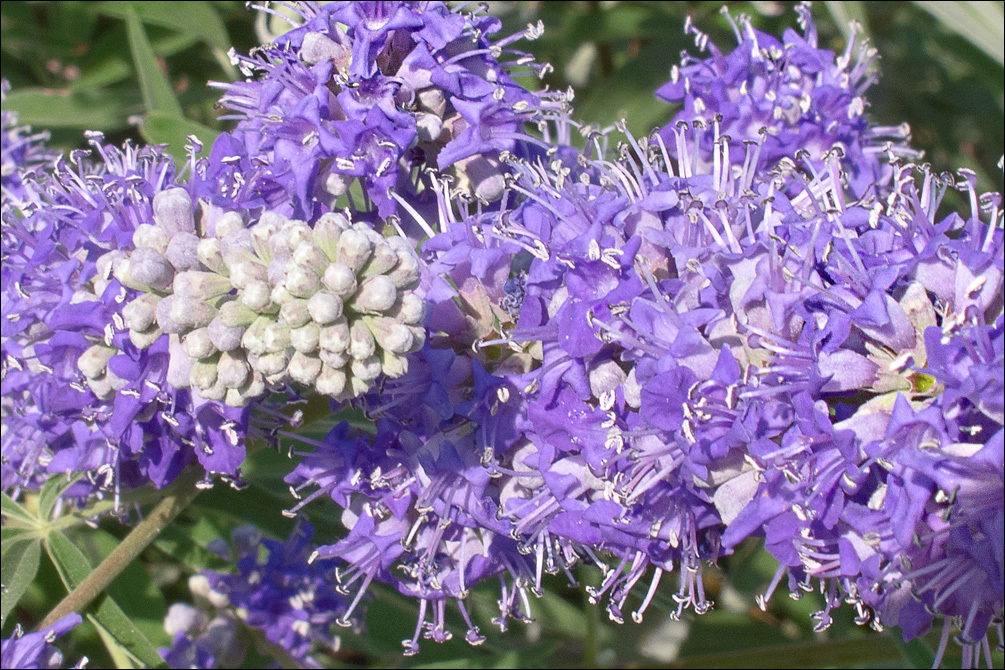
Slo.: navadna konopljika - syn.: Agnus-castus robusta (Lebas) Carrire, Vitex robusta Lebas - Habitat: Close to Adriatic Sea shore; almost flat terrain; gravelly, calcareous ground, full sun, dry place but ground water present (near water source and reservoir of drinking water for village Stara Baka), elevation 12 m (40 feet); average precipitations ~ 1.000 mm/year, average temperature 12-14 deg C, Mediterranean phytogeographical region. Substratum: soil among rocks and gravel. Comment: Vitex agnus-castus is a beautiful Mediterranean shrub (sometimes also a small tree up to a few meters tall), not very common but also not a rare plant. It can be found all around Mediterranean Sea along sea shore but also inside the country along rivers and lake shores. Often it is associated with human settlements. The plant is known and esteemed for millennia. Hippocrates and Theofrastos, among others, knew and described the plant and its many uses predominantly in medicine but also in culinary and horticulture. Plant's seeds were used as a supplement of pepper. They were also used as a suppressor of sexual drive (look at the scientific as well as English and German common name of the plant). In contradiction to this, some historical sources consider it as an aphrodisiac. Be as it may, it definitely has an effect on human hormones, which is confirmed also by modern medicine. Ref.: (1) A. Martini et all., Mala Flora Slovenije (Flora of Slovenia - Key) (in Slovenian), Tehnina Zaloba Slovenije (2007), p 585. (2) R. Brus, Drevesa in grmi Jadrana (Trees and Shrubs of Adria) (in Slovene), Mordijan (2012), p 515. (3) I. Schnfelder, P. Schnfelder, Kosmos Atlas Mittelmeer- und Kanarenflora, Kosmos, (2002), p 169. (4) M. Blamey, C. Grey-Wilson, Wild Flowers of the Mediterranean, A & C Black, London (2005), p 387.
-
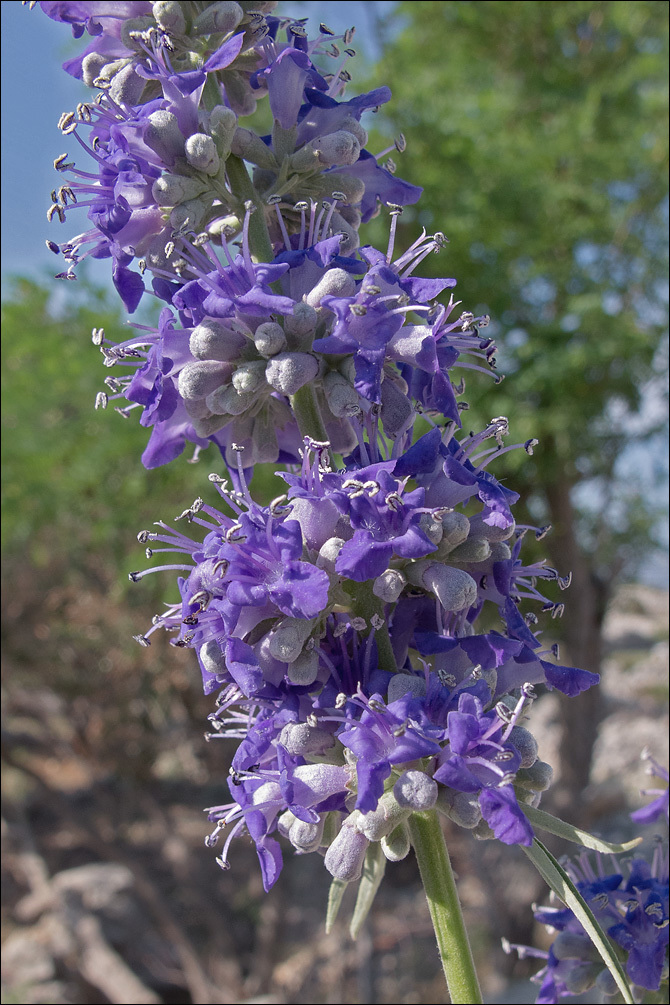
Slo.: navadna konopljika - syn.: Agnus-castus robusta (Lebas) Carrire, Vitex robusta Lebas - Habitat: Close to Adriatic Sea shore; almost flat terrain; gravelly, calcareous ground, full sun, dry place but ground water present (near water source and reservoir of drinking water for village Stara Baka), elevation 12 m (40 feet); average precipitations ~ 1.000 mm/year, average temperature 12-14 deg C, Mediterranean phytogeographical region. Substratum: soil among rocks and gravel. Comment: Vitex agnus-castus is a beautiful Mediterranean shrub (sometimes also a small tree up to a few meters tall), not very common but also not a rare plant. It can be found all around Mediterranean Sea along sea shore but also inside the country along rivers and lake shores. Often it is associated with human settlements. The plant is known and esteemed for millennia. Hippocrates and Theofrastos, among others, knew and described the plant and its many uses predominantly in medicine but also in culinary and horticulture. Plant's seeds were used as a supplement of pepper. They were also used as a suppressor of sexual drive (look at the scientific as well as English and German common name of the plant). In contradiction to this, some historical sources consider it as an aphrodisiac. Be as it may, it definitely has an effect on human hormones, which is confirmed also by modern medicine. Ref.: (1) A. Martini et all., Mala Flora Slovenije (Flora of Slovenia - Key) (in Slovenian), Tehnina Zaloba Slovenije (2007), p 585. (2) R. Brus, Drevesa in grmi Jadrana (Trees and Shrubs of Adria) (in Slovene), Mordijan (2012), p 515. (3) I. Schnfelder, P. Schnfelder, Kosmos Atlas Mittelmeer- und Kanarenflora, Kosmos, (2002), p 169. (4) M. Blamey, C. Grey-Wilson, Wild Flowers of the Mediterranean, A & C Black, London (2005), p 387.
-
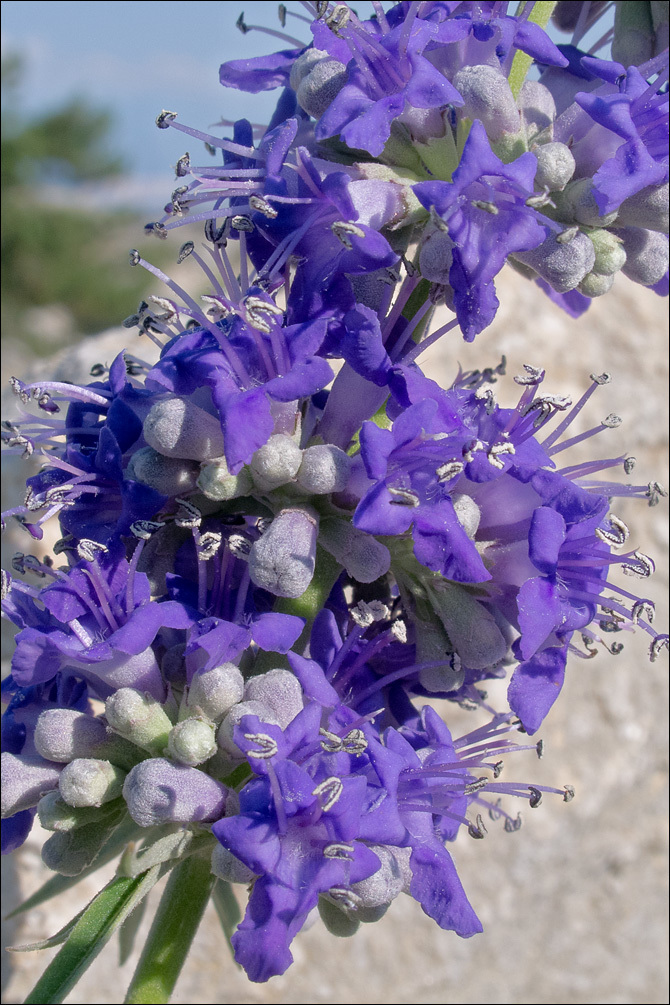
Slo.: navadna konopljika - syn.: Agnus-castus robusta (Lebas) Carrire, Vitex robusta Lebas - Habitat: Close to Adriatic Sea shore; almost flat terrain; gravelly, calcareous ground, full sun, dry place but ground water present (near water source and reservoir of drinking water for village Stara Baka), elevation 12 m (40 feet); average precipitations ~ 1.000 mm/year, average temperature 12-14 deg C, Mediterranean phytogeographical region. Substratum: soil among rocks and gravel. Comment: Vitex agnus-castus is a beautiful Mediterranean shrub (sometimes also a small tree up to a few meters tall), not very common but also not a rare plant. It can be found all around Mediterranean Sea along sea shore but also inside the country along rivers and lake shores. Often it is associated with human settlements. The plant is known and esteemed for millennia. Hippocrates and Theofrastos, among others, knew and described the plant and its many uses predominantly in medicine but also in culinary and horticulture. Plant's seeds were used as a supplement of pepper. They were also used as a suppressor of sexual drive (look at the scientific as well as English and German common name of the plant). In contradiction to this, some historical sources consider it as an aphrodisiac. Be as it may, it definitely has an effect on human hormones, which is confirmed also by modern medicine. Ref.: (1) A. Martini et all., Mala Flora Slovenije (Flora of Slovenia - Key) (in Slovenian), Tehnina Zaloba Slovenije (2007), p 585. (2) R. Brus, Drevesa in grmi Jadrana (Trees and Shrubs of Adria) (in Slovene), Mordijan (2012), p 515. (3) I. Schnfelder, P. Schnfelder, Kosmos Atlas Mittelmeer- und Kanarenflora, Kosmos, (2002), p 169. (4) M. Blamey, C. Grey-Wilson, Wild Flowers of the Mediterranean, A & C Black, London (2005), p 387.
-
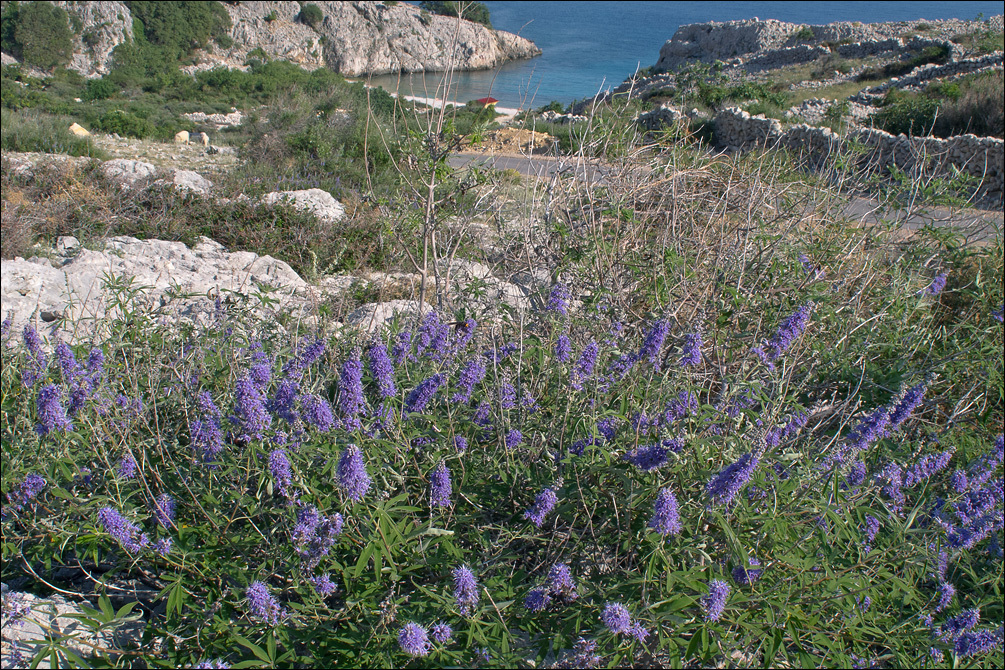
Slo.: navadna konopljika - syn.: Agnus-castus robusta (Lebas) Carrire, Vitex robusta Lebas - Habitat: Close to Adriatic Sea shore; almost flat terrain; gravelly, calcareous ground, full sun, dry place but ground water present (near water source and reservoir of drinking water for village Stara Baka), elevation 12 m (40 feet); average precipitations ~ 1.000 mm/year, average temperature 12-14 deg C, Mediterranean phytogeographical region. Substratum: soil among rocks and gravel. Comment: Vitex agnus-castus is a beautiful Mediterranean shrub (sometimes also a small tree up to a few meters tall), not very common but also not a rare plant. It can be found all around Mediterranean Sea along sea shore but also inside the country along rivers and lake shores. Often it is associated with human settlements. The plant is known and esteemed for millennia. Hippocrates and Theofrastos, among others, knew and described the plant and its many uses predominantly in medicine but also in culinary and horticulture. Plant's seeds were used as a supplement of pepper. They were also used as a suppressor of sexual drive (look at the scientific as well as English and German common name of the plant). In contradiction to this, some historical sources consider it as an aphrodisiac. Be as it may, it definitely has an effect on human hormones, which is confirmed also by modern medicine. Ref.: (1) A. Martini et all., Mala Flora Slovenije (Flora of Slovenia - Key) (in Slovenian), Tehnina Zaloba Slovenije (2007), p 585. (2) R. Brus, Drevesa in grmi Jadrana (Trees and Shrubs of Adria) (in Slovene), Mordijan (2012), p 515. (3) I. Schnfelder, P. Schnfelder, Kosmos Atlas Mittelmeer- und Kanarenflora, Kosmos, (2002), p 169. (4) M. Blamey, C. Grey-Wilson, Wild Flowers of the Mediterranean, A & C Black, London (2005), p 387.
-
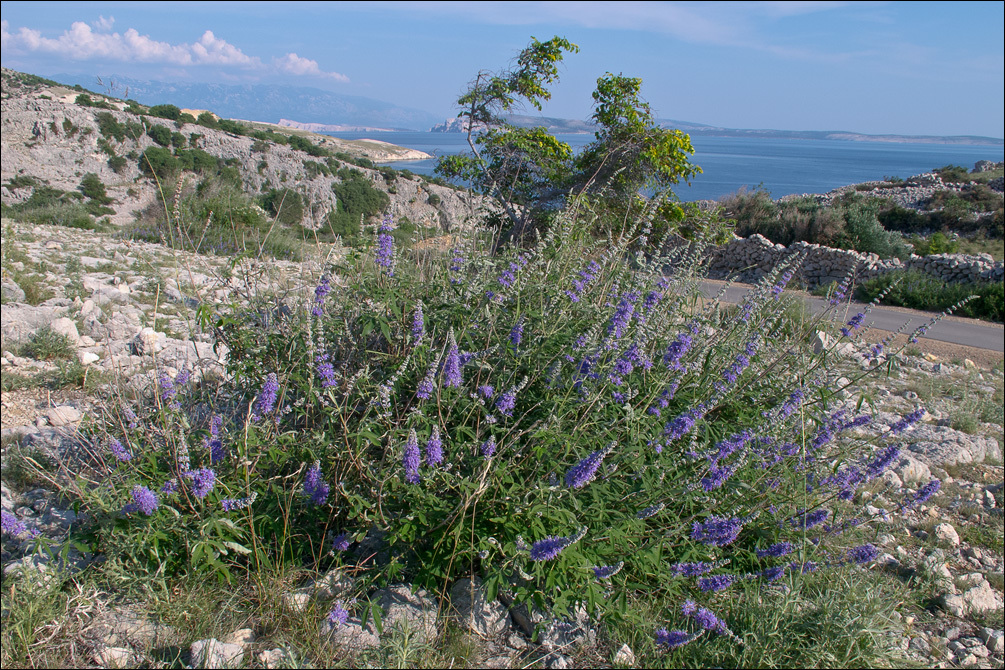
Slo.: navadna konopljika - syn.: Agnus-castus robusta (Lebas) Carrire, Vitex robusta Lebas - Habitat: Close to Adriatic Sea shore; almost flat terrain; gravelly, calcareous ground, full sun, dry place but ground water present (near water source and reservoir of drinking water for village Stara Baka), elevation 12 m (40 feet); average precipitations ~ 1.000 mm/year, average temperature 12-14 deg C, Mediterranean phytogeographical region. Substratum: soil among rocks and gravel. Comment: Vitex agnus-castus is a beautiful Mediterranean shrub (sometimes also a small tree up to a few meters tall), not very common but also not a rare plant. It can be found all around Mediterranean Sea along sea shore but also inside the country along rivers and lake shores. Often it is associated with human settlements. The plant is known and esteemed for millennia. Hippocrates and Theofrastos, among others, knew and described the plant and its many uses predominantly in medicine but also in culinary and horticulture. Plant's seeds were used as a supplement of pepper. They were also used as a suppressor of sexual drive (look at the scientific as well as English and German common name of the plant). In contradiction to this, some historical sources consider it as an aphrodisiac. Be as it may, it definitely has an effect on human hormones, which is confirmed also by modern medicine. Ref.: (1) A. Martini et all., Mala Flora Slovenije (Flora of Slovenia - Key) (in Slovenian), Tehnina Zaloba Slovenije (2007), p 585. (2) R. Brus, Drevesa in grmi Jadrana (Trees and Shrubs of Adria) (in Slovene), Mordijan (2012), p 515. (3) I. Schnfelder, P. Schnfelder, Kosmos Atlas Mittelmeer- und Kanarenflora, Kosmos, (2002), p 169. (4) M. Blamey, C. Grey-Wilson, Wild Flowers of the Mediterranean, A & C Black, London (2005), p 387.
-
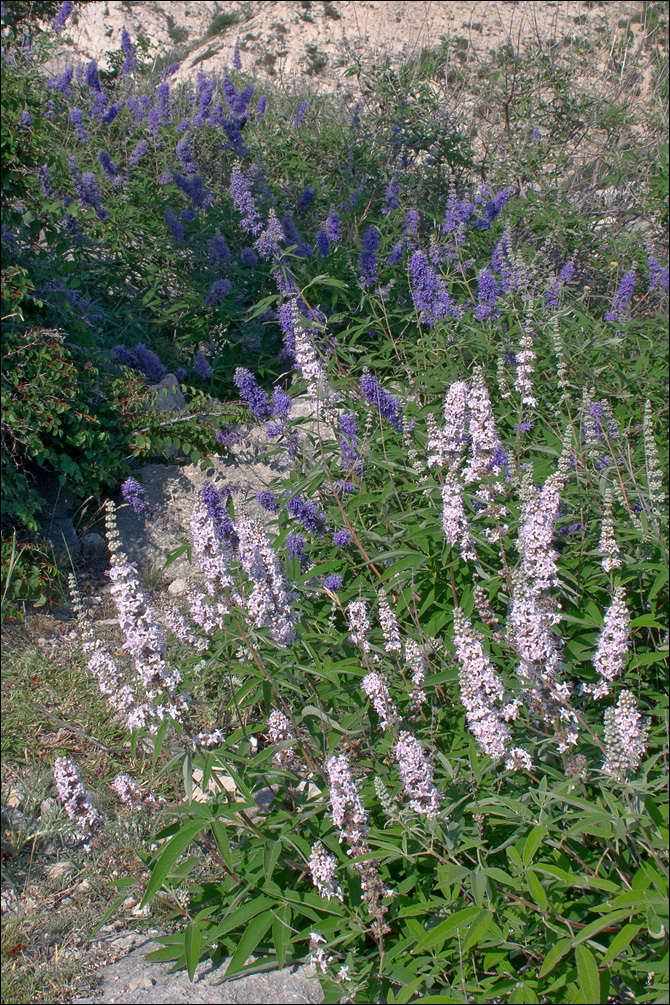
Slo.: navadna konopljika - syn.: Agnus-castus robusta (Lebas) Carrire, Vitex robusta Lebas - Habitat: Close to Adriatic Sea shore; almost flat terrain; gravelly, calcareous ground, full sun, dry place but ground water present (near water source and reservoir of drinking water for village Stara Baka), elevation 12 m (40 feet); average precipitations ~ 1.000 mm/year, average temperature 12-14 deg C, Mediterranean phytogeographical region. Substratum: soil among rocks and gravel. Comment: Vitex agnus-castus is a beautiful Mediterranean shrub (sometimes also a small tree up to a few meters tall), not very common but also not a rare plant. It can be found all around Mediterranean Sea along sea shore but also inside the country along rivers and lake shores. Often it is associated with human settlements. The plant is known and esteemed for millennia. Hippocrates and Theofrastos, among others, knew and described the plant and its many uses predominantly in medicine but also in culinary and horticulture. Plant's seeds were used as a supplement of pepper. They were also used as a suppressor of sexual drive (look at the scientific as well as English and German common name of the plant). In contradiction to this, some historical sources consider it as an aphrodisiac. Be as it may, it definitely has an effect on human hormones, which is confirmed also by modern medicine. Ref.: (1) A. Martini et all., Mala Flora Slovenije (Flora of Slovenia - Key) (in Slovenian), Tehnina Zaloba Slovenije (2007), p 585. (2) R. Brus, Drevesa in grmi Jadrana (Trees and Shrubs of Adria) (in Slovene), Mordijan (2012), p 515. (3) I. Schnfelder, P. Schnfelder, Kosmos Atlas Mittelmeer- und Kanarenflora, Kosmos, (2002), p 169. (4) M. Blamey, C. Grey-Wilson, Wild Flowers of the Mediterranean, A & C Black, London (2005), p 387.
-
-
-
-
-



